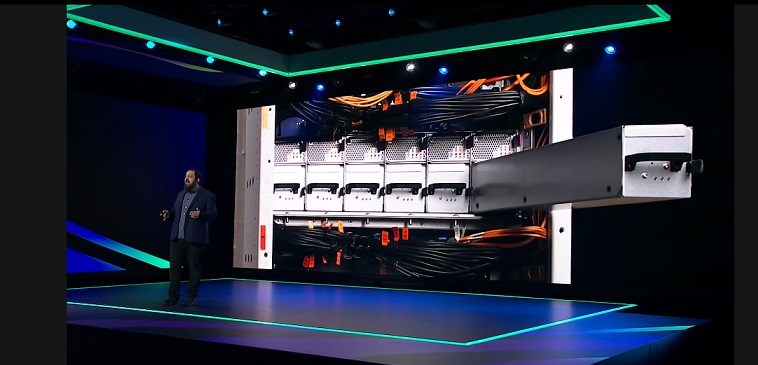 CLOUD
CLOUD
 CLOUD
CLOUD
 CLOUD
CLOUD
The announcement today that Arm Ltd. will move a substantial portion of its electronic design automation applications onto the Amazon Web Services Inc. cloud platform is a move that bears watching for its future enterprise implications.
That is because Arm’s reduced instruction set-based processor designs, already a mainstay in mobile devices, are poised to take on a large amount of enterprise workloads and power servers in the near future.
“The advantages that AWS has are enormous economies of scale across many users,” said David Floyer, chief technology officer at SiliconANGLE Media’s sister research firm Wikibon. “Microsoft, Google and AWS are going to be leading this charge of Arm into the data center.”
Floyer spoke with Dave Vellante, host of theCUBE, SiliconANGLE Media’s livestreaming studio, during the infrastructure keynote analysis on the second week of AWS re:Invent. They discussed the role of specialized processors in the enterprise, the importance of architectural efficiency to drive innovation, the pursuit of new computing solutions at the edge and AWS’ evolving role in mission-critical applications. (* Disclosure below.)
In a sign of how closely Arm’s interests are becoming aligned with major cloud providers such as AWS, the chipmaker’s capabilities will support its own migration to the public cloud. As outlined by Peter DeSantis, senior vice president of global infrastructure and customer support at AWS, who delivered the infrastructure keynote on Thursday, EC2 compute instances will be powered by AWS Graviton2, which was developed by AWS from Arm’s Neoverse processor solution.
“Alternative processors are taking off,” Vellante said. “They spent a lot of time on Graviton. They laid out their case that these specialized processors they are developing are more efficient.”
Efficiency will play a key role for both firms going forward. Arm’s design model benefits from volume at the component level inside a processor, accounting for 10 times the number of wafers manufactured by worldwide fabs. Higher performance and lower costs create a more efficient innovation engine when compared with the half-decade integrated processor cycle, according to Floyer.
“ARM is ahead because it’s done all of the work in the volume area,” Floyer said. “It’s a different world.”
Not to be forgotten is the role of processors at the edge. By making a computer architecture that is heterogeneous, Arm hopes to fit in well with edge demands by offering flexible, low-latency, high-bandwidth connections between processors.
AWS shares a strong interest in the edge too, as evidenced by its announcements last week surrounding AWS’ Local Zones, Wavelength and Outposts.
“The edge is such an enormous opportunity,” Vellante said. “It’s going to start in the data center and then push out to the edge.”
By moving some of its core chip design workloads to AWS, Arm is signaling confidence in the cloud provider’s ability to handle mission-critical applications versus general purpose computing. AWS has built a solid position in this arena, despite hitting a speed bump in November when a capacity addition to its Kinesis servers caused an outage of several hours.
Continued pursuit of partnerships by AWS in the mission-critical space can probably be expected going forward, according to Floyer, as the company continues to build on its strength in the cloud.
“They have a very impressive track record, despite the failure the other day,” Floyer said. “AWS can embrace different platforms and mission critical is an area where AWS will need to partner in the future.”
Watch the complete video interview below, and be sure to check out more of SiliconANGLE’s and theCUBE’s coverage of AWS re:Invent. (* Disclosure: Amazon Web Services sponsored this segment of theCUBE. Neither AWS nor other sponsors have editorial control over content on theCUBE or SiliconANGLE.)
THANK YOU